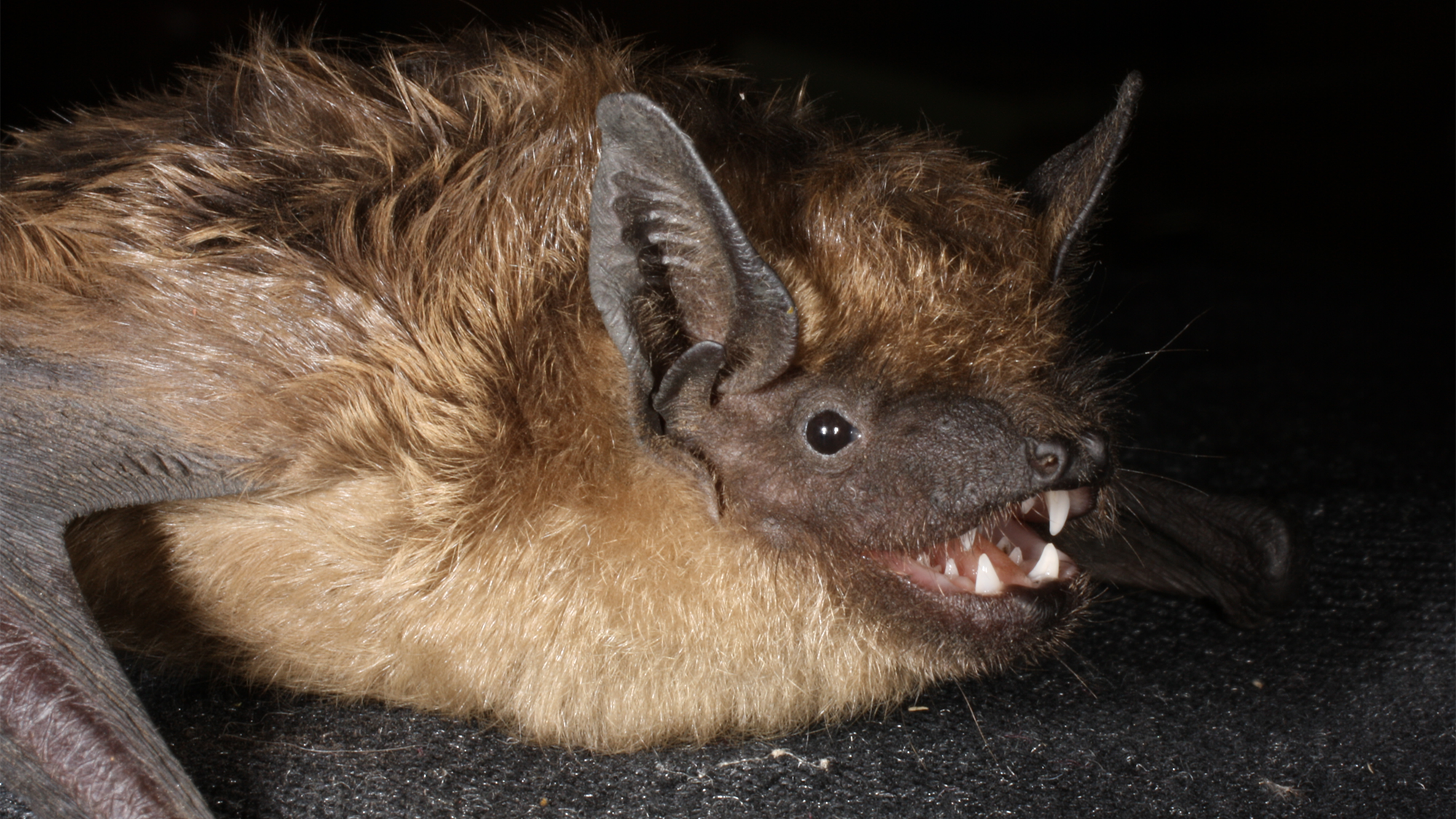

The male sex organs of the animal kingdom come in all shapes and sizes from some that look like a bottle opener to genital stingers. For mammals, penetrative sex with a penis is needed to successfully mate. However, scientists have documented the first non-penetrative sex ever seen in a mammal. The mating technique was observed in the serotine bat (Eptesicus serotinus) and it is described in a study published November 20 in the journal Current Biology.
The mysteries of bat sex
Serotine bats are quite common in Europe and Asia, but the intricacies of bat sex remain elusive. Most previous observations of bats mating have only offered a glimpse of the backs of mating pairs. But in the new study, a team from the University of Lausanne in Switzerland and a bat rehabilitation center in Ukraine got lucky.
[Related: How echolocation lets bats, dolphins, and even people navigate by sound.]
“By chance, we had observed that these bats have disproportionately long penises, and we were always wondering ‘how does that work?’,” study co-author and University of Lausanne evolutionary biologist Nicolas Fasel said in a statement. “We thought maybe it’s like in the dog where the penis engorges after penetration so that they are locked together, or alternatively maybe they just couldn’t put it inside, but that type of copulation hasn’t been reported in mammals until now.”
The team placed cameras behind a grid that the bats could climb hoping to get footage of their genitals and mating from one side of the grid. They found that bats’ penises are roughly seven times longer than their partners’ vaginas. Each has a “heart-shaped” head that is also seven times wider than the common bat vaginal opening. This size and shape would make penetration after an erection impossible. The study shows that instead of functioning as a penetrative organ, the penis is more like an extra arm. It pushes the female’s tail sheath out of the way to engage in contact mating, similar to cloacal kissing in birds. Instead of penetration, the birds touch their two rear orifices called the cloaca together for only a few seconds, but long enough for sperm to be released.
The bat sex detectives
Fasel collaborated with bat enthusiast and citizen scientist Jan Jeucker, who filmed hours of footage of the serotine bat in a church attic in the Netherlands. The team analyzed 97 mating events—93 from the Dutch church and four from the Ukrainian bat rehabilitation center. During the recordings, the team did not see a single incidence of penetration. The erectile tissues of the bat penis were completely enlarged before they made any contact with the vulva. The male bats grasped their partner’s nape and moved their pelvis like a probe until it made contact with the vulva. Once contact was made, the pair remained still. These interactions lasted less than 53 minutes on average, but the longest event extended to 12.7 hours.
After copulation, the researchers saw that the female bats had wet abdomens. They believe this dampness indicates the presence of semen, but more research is needed to confirm if sperm was actually transferred during these assumed mating events.
[Related: What bats and metal vocalists have in common.]
The team also characterized the form of serotine bat genitalia by measuring the erect penises of live bats that were captured as part of other research studies. The necropsies on bats that had died at bat rehabilitation centers revealed how much longer and wider the serotine bat penises were compared to the bat vaginas. The penises are also about a fifth as long as the bats’ head to body length. Female serotine bats also have unusually long cervixes, which potentially helps them select and store sperm.
The team believes that the bats may have evolved their oversized penises as a way to push aside the female tail membranes.
“Bats use their tail membranes for flying and to capture the insects, and female bats also use them to cover their lower parts and protect themselves from males,” said Fasel. “But the males can then use these big penises to overcome the tail membrane and reach the vulva.”
The team plans to study bat mating behavior in more natural contexts and further investigate penis morphology and mating behavior in other bat species.
“We are trying to develop a bat porn box, which will be like an aquarium with cameras everywhere,” says Fasel.
